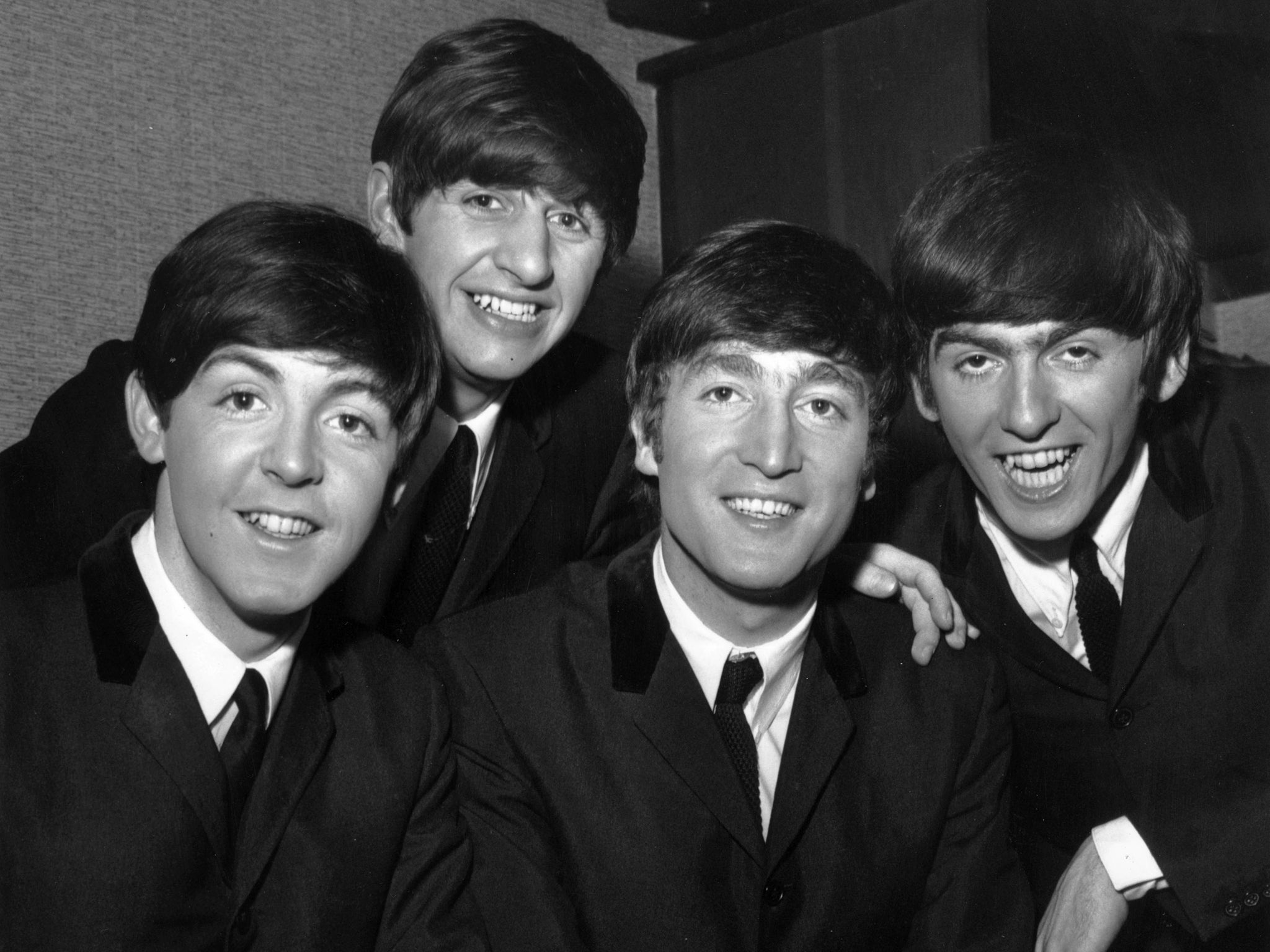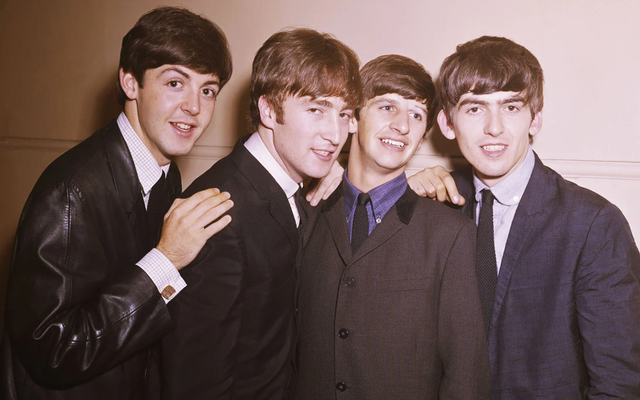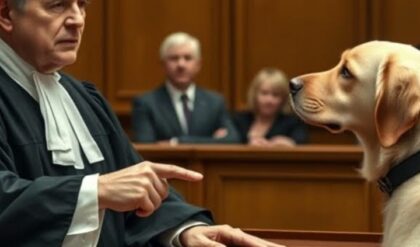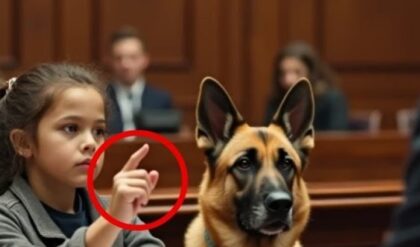From ‘Please Please Me’ to ‘Let It Be’, Graeme Ross assesses the Fab Four’s 12 studio albums

Genius at work: (from left) Paul McCartney, Ringo Starr, John Lennon and George Harrison in 1964
(Getty)
On 26 September 1969, the last album recorded by The Beatles was released. More than five decades after the Fab Four split, the world is still fascinated by the music of the greatest pop group ever. During their lifetime, The Beatles released a dozen studio albums – I don’t include 1967’s Magical Mystery Tour as it was originally only released as a double EP in the UK, and was only bulked up for subsequent re-releases with various singles and non-album tracks much later.
Almost all Beatles albums are great in their own way and I’m sure we all have our own ideas on the order of merit. This is mine.
AI John Lennon and George Harrison appear in Beatles new music video
12 Yellow Submarine (1969)
Not as bad as popular myth would have it, nevertheless, the soundtrack to the band’s animated movie is the one Beatles album that comes closest to a “file under – for completists only” rating. The best-known songs – “All You Need Is Love” and “Yellow Submarine” are available on innumerable compilations, and of the four new songs, only Lennon’s raw and menacing “Hey Bulldog” hits the mark.
11 Beatles For Sale (1964)
With three albums, a clutch of classic singles, a landmark movie and a hectic touring schedule including their conquest of America to their name, a weary band retreated to Abbey Road to record their fourth album in less than two years. The results were variable on a covers-heavy set with folk and country influences on some downbeat but effective originals such as “No Reply” and “I’m a Loser”, while “Eight Days a Week” represents the pinnacle of the Lennon/McCartney writing partnership before they began to write less and less together. However, with too much filler and some perfunctory covers, Beatles For Sale hasn’t stood the test of time as well as any of their other 1962-1966 (“The Red Album”) era long players, resulting in its low position here.

10 Let It Be (1970)
The messy break-up album recorded under trying circumstances contains a few tracks I would be happy never to hear again but any album that includes “Get Back”, “Let It Be”, “The Long and Winding Road” (with or without Phil Spector’s ethereal choir and strings which McCartney hated), and Lennon and McCartney harmonising together for the first time in years on “Two of Us“ has to have something going for it. Ultimately, therefore, Let It Be proved something of a sad but not entirely unworthy epitaph for the greatest pop group ever.
9 With the Beatles (1963)
Between their first and second albums The Beatles had three No 1 singles – “From Me to You”, “She Loves You” and “I Want to Hold Your Hand” – but the temptation to include any of them on their second long-player was resisted. However, with 14 tracks on With the Beatles, the band couldn’t be accused of not giving value for money, even if it duplicated their first album with six covers, including several impressive nods to their love of Motown on “Please Mr Postman”, “You Really Got a Hold on Me” and “Money”. Elsewhere, George, who surprisingly has three solo vocals on the album, as many as Paul, tears up “Roll Over Beethoven” while McCartney’s “All My Loving” is still one of the group’s most loved early songs. It’s an album largely dominated by Lennon however, and he excels on “It Won’t Be Long” “Not a Second Time” and the aforementioned “Money”.
8 Please Please Me (1963)
The tone of the thrilling debut that launched the Fab Four into pop music history is set by Paul on the opening track as he counts in “I Saw Her Standing There” (“One, Two, Three, Four!”). Lennon’s justly lauded, throat-tearing version of “Twist and Shout” bookends the album and in between there’s a mix of originals and covers including a fine Harrison vocal on “Do You Want to Know a Secret” and the first two hits “Love Me Do” and the euphoric title track as the band struck up an immediate rapport with producer George Martin, even if George (Harrison) didn’t like his tie. Almost half the 14 tracks were cover versions, and as such, Please Please Me is an undeniably raw, but breathless and brilliant rush through the band’s live act of the day, with Ringo proving conclusively that he was the right man for the job. It also points to the future of pop music as acts more and more began to write their own material, and remains one of the great debut albums.
7 Help! (1965)
A tie-in with the band’s second film, Help! was a considerable improvement on previous album Beatles For Sale, and in truth is a bit of a mixed bag, but the best songs are very good indeed, rising to classic status with “Ticket to Ride”, McCartney’s “Yesterday” – the ultimate Beatles standard – and the title track, which was Lennon’s very real cry for help. Bob Dylan’s influence permeated Lennon’s superb “You’ve Got to Hide Your Love Away” and McCartney’s countrified “I’ve Just Seen a Face” rolls and tumbles sumptuously, and then there’s the bittersweet “You’re Going to Lose That Girl” – a cavalcade of riches that emphatically compensate for some of the lesser tracks on show.
6 A Hard Day’s Night (1964)
Partly the soundtrack of their first movie which amounts to their first quantum leap with all 13 tracks penned by Lennon and McCartney. The Beatles’ third album was light years ahead of the opposition in their homeland in 1964, from the moment it announced itself with the epochal opening chord on George’s new Rickenbacker 12-string on the famous title track. Lennon sang or composed the bulk of the songs, with “I Should Have Known Better” and “I’ll Be Back” particular highlights, but McCartney owned three of the most lustrous jewels in “And I Love Her”, “Can’t Buy Me Love” and the band’s most sophisticated song to date, “Things We Said Today”.
5 Rubber Soul (1965)
The Beatles entered their seminal middle period with another seismic leap in quality with their first true masterpiece which, although influenced by soul and Dylan, proved so influential itself that it spurred contemporaries such as Brian Wilson to hitherto unimagined heights. The quality control barely lapsed over the 14 tracks, with the band never tighter than on the opening “Drive My Car”, and then the innovations flowed. Harrison’s sitar on Lennon’s sublime confessional “Norwegian Wood (This Bird Has Flown)”, double-tracked vocals on several tracks, fuzz bass on Harrison’s “Think For Yourself”, which along with “If I Needed Someone” demonstrated that Harrison had arrived as a songwriter of note, and who can forget Lennon’s intake of breath on the superlative “Girl”? McCartney tossed off another standard in “Michelle” and there are several deeply personal songs, with Lennon’s “Nowhere Man” articulating his despair at the vacuum in his personal life and McCartney documenting his turbulent relationship with Jane Asher on “You Won’t See Me” and “I’m Looking Through You”. But the jewel in the Lennon canon then and forever after is “In My Life”, which would rank near the top of any list of Beatles greatest songs. Rubber Soul confirmed once and for all that The Beatles were the unimpeachable masters of their craft as the music world held its breath in anticipation of their next move.
4 The Beatles (1968)
The sprawling “White Album” was recorded in an atmosphere of tension and strained relationships as the group disintegrated, yet somehow a work of great quality emerged, even if it was the product of the four individual members pulling in different directions. There’s little cohesion here in the scattershot mix of styles, just a lot of great songs interspersed with some not so great songs, and some rubbish. With 30 tracks, there is much merit in the oft-repeated claim that with some judicious pruning, The Beatles could have been the greatest single album of all time. A snapshot of just some of the great songs includes McCartney’s “Blackbird”, “Helter Skelter”, “Back in the USSR” and “Birthday”; Lennon’s “Julia”, “Dear Prudence”, “Happiness is a Warm Gun” and “Revolution 1”, while Harrison’s stellar contributions include “While My Guitar Gently Weeps” and “Long, Long, Long”. With that quality, single album or not, it would still have to be a heck of a long album.
3 Sgt Pepper’s Lonely Hearts Club Band (1967)
Five decades and more since its release, Sgt Pepper, with its “band within a band” concept and drugs-influenced vibe still reigns imperiously as the most famous pop record ever made. It may now not be considered the greatest album ever recorded, or indeed the greatest Beatles album, but with George Martin at the peak of his powers and the band now retired from touring, they were able to hone their mastery of the studio. Sgt Pepper remains a piece of art that in terms of experimentation, innovation and influence has rarely, if ever, been bettered. It contains some of the band’s most-loved songs – “With a Little Help From My Friends”, “Lucy in the Sky with Diamonds”, a genuine masterpiece for the ages in “She’s Leaving Home”, and their greatest, “A Day in the Life”, but overall, the album’s greatness lies in the old cliche of the sum being greater than the parts.
2 Abbey Road (1969)
With Let It Be in the can but not yet deemed fit for release due to the fractious nature of the recordings, Abbey Road was chronologically the last Beatles album to be recorded. Fittingly, although many of the tracks were the products of the individual members, Abbey Road reunited the band for one last magnificent stand. The album is justly celebrated for the McCartney-led 16-minute medley on side two, commencing with “You Never Give Me Your Money” and concluding beautifully and appropriately with “The End”, but it’s also a side that begins with Harrison’s “Here Comes the Sun”. Side one finds “Something”, perhaps Harrison’s greatest song, while Lennon is at his acerbic best on “Come Together”. The seven-minute-plus “I Want You” is The Beatles at their heaviest and most together and surely only the stoniest of hearts can’t love Ringo’s “Octopus’s Garden”. But for people of a certain vintage, nothing before or since has topped that glorious side two of half-finished songs that became known as “The Long One”.
1 Revolver (1966)
For a good number of years, Revolver lay in Sgt Pepper’s shadow – universally admired to be sure, but somehow a little harder to love than previous simpler pleasures and Pepper itself. Part of that may be due to the mind-blowing eclecticism and scale of ambition of the album, which all these years later still astounds. The influence of drugs, psychedelia and eastern religion came to the fore on Revolver, with double-tracked guitars, reversed tape loops, varispeed and various sound effects as the band, with George Martin an equal partner, fully explored the boundless sonic possibilities of the studio. There are 14 tracks on Revolver and every one of them leaves an indelible mark, from George’s scathing opener “Taxman” to the final track, Lennon’s astonishingly futuristic “Tomorrow Never Knows”. In between, we have high art from McCartney with the haunting “Eleanor Rigby” complete with double-string quartet, and the poignant “For No One”, and yet another ballad standard, “Here, There and Everywhere”, and he also excels on the horn-driven “Got to Get You into My Life” and the glorious “Good Day Sunshine”. “Tomorrow Never Knows” finds Lennon at a creative peak, and he almost matches it on the Dylanesque “And Your Bird Can Sing” and the psychedelic tour de force “She Said She Said”, while the backward guitar solo and Lennon’s hazy vocal on “I’m Only Sleeping” sum up the rampant experimentation of Revolver. No longer overshadowed by Sgt Pepper, its predecessor is an album that has grown in stature and reputation through the decades and long ago usurped Pepper as the Beatles’ finest hour. For many critics, Revolver is the greatest album ever made, an argument I’ll save for another day, but for now, it reigns as The Beatles’ greatest album.





